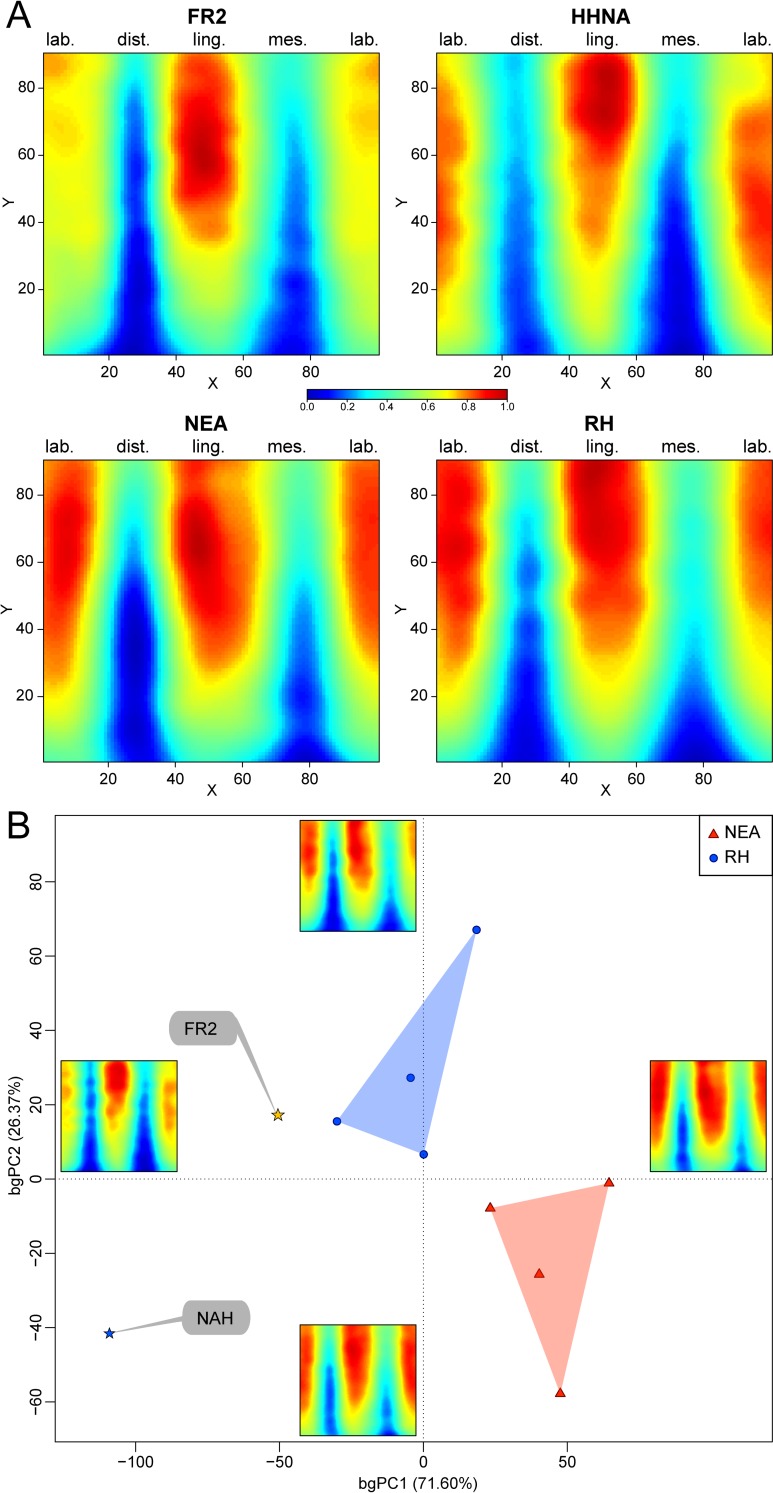Fig 3.
Standardized morphometric map of thickness variation for the root portion 15–85% of the LLI2 FR2 from Fontana Ranuccio (A) compared with that of the North African late Early-early Middle Pleistocene Homo (NAH) from Tighenif [59], as well as with the consensus maps representing four Neanderthal (NEA) specimens (KRD69, KRD71 from Krapina and the two LI2s from Regourdou) [60] and four extant humans (EH; original data). Each map is set within a grid made of 90 columns (X) running along the labial (lab.), distal (dist.), lingual (ling.) and mesial (mes.) aspects of the root and of 100 rows (Y). Relative thickness rendered by a chromatic scale increasing from dark blue (0) to red (1). The differences between FR2 and the comparative specimens/samples were assessed using between-group principal component analysis (B). Standardized morphometric maps representing the extreme conditions along bgPC1 and bgPC2 are illustrated at the end of the axes.

